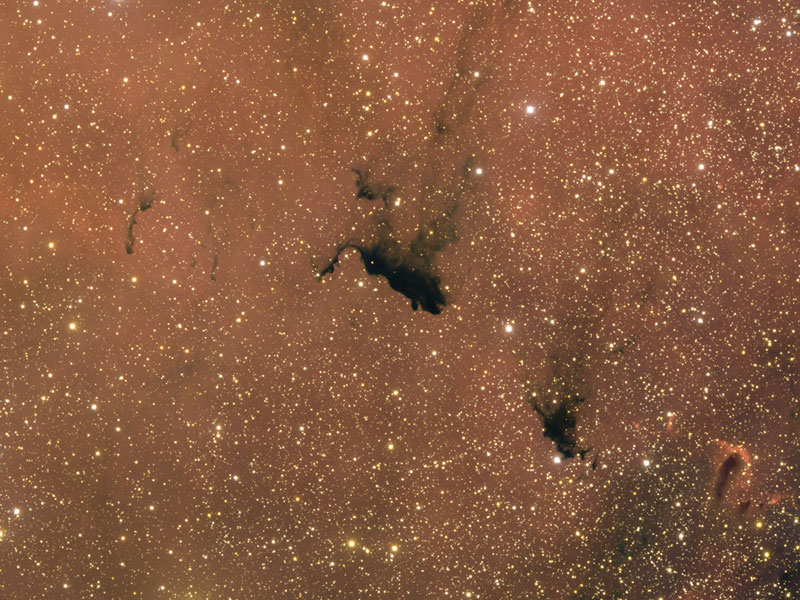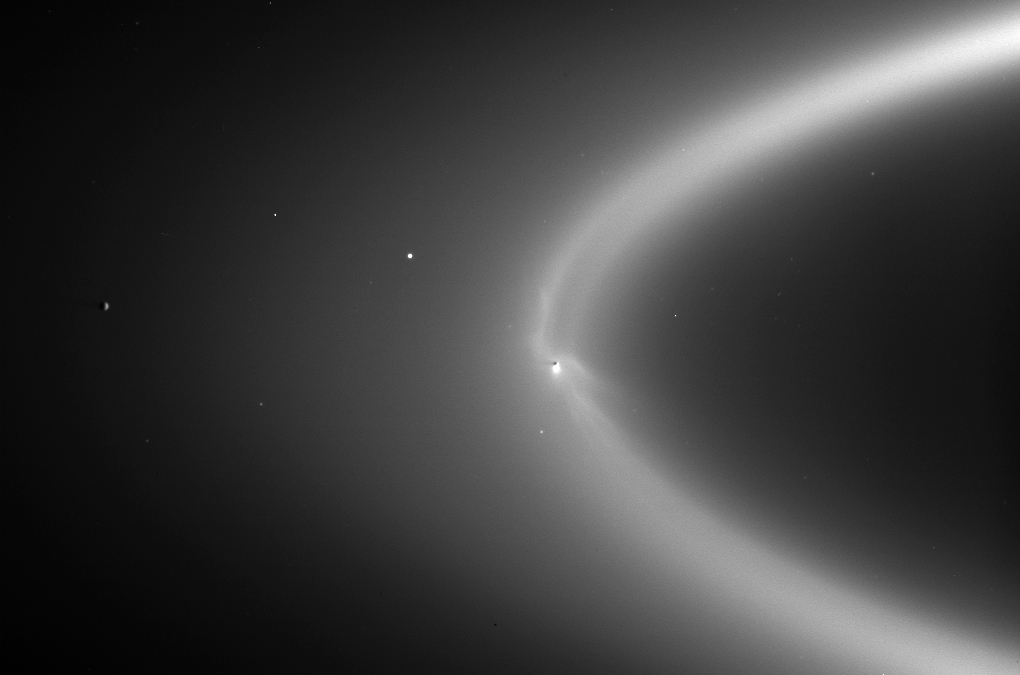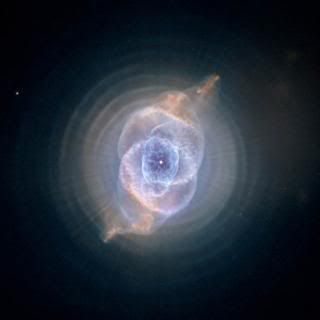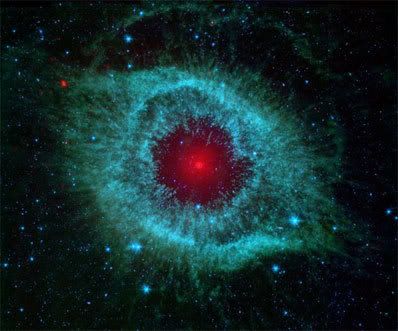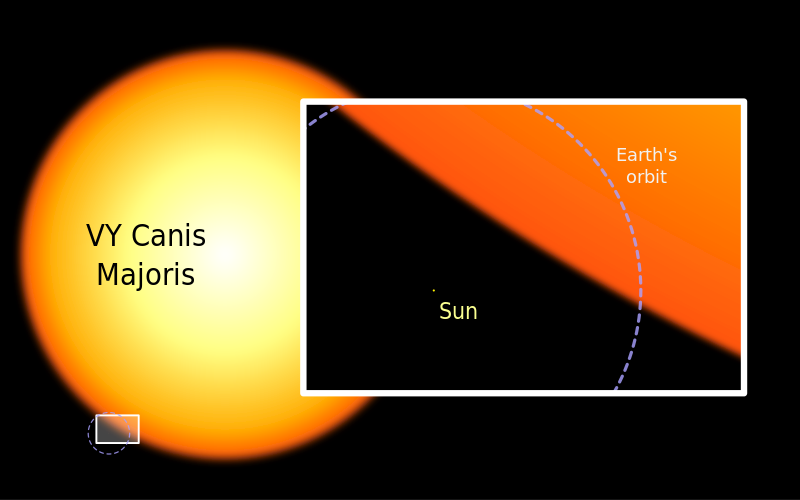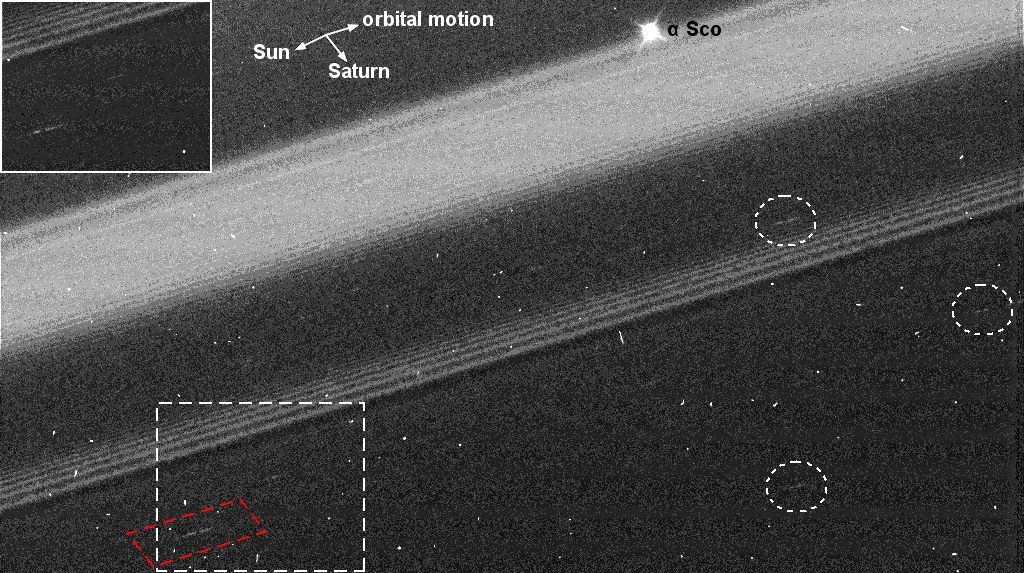You are using an out of date browser. It may not display this or other websites correctly.
You should upgrade or use an alternative browser.
You should upgrade or use an alternative browser.
Astronomy Picture thread
- Thread starter Perfection
- Start date
Perfection
The Great Head.
Kan' Sharuminar
Fluffy
To celebrate this great day of merging, here are the colliding Mice Galaxies!


Perfection
The Great Head.
Perfection
The Great Head.
Sophie 378
Avvie by ybbor
Fifty
!!!!!!!!!!!!!!!!!!!!!!!!!
During my recent trip through the galaxy, I came across the following hexagonal ring around Saturn's north pole!
I landed to try to ascertain what was going on, and spoke to some Saturnian scientists. They are apprently trying to build a massive rotating pentagonal ring around their pole as an ever-lasting monument to Perfection, but they are having some technical difficulties and can only make a hexagon at this juncture. They say that the pentagon should be formed some time within the next couple weeks.

I landed to try to ascertain what was going on, and spoke to some Saturnian scientists. They are apprently trying to build a massive rotating pentagonal ring around their pole as an ever-lasting monument to Perfection, but they are having some technical difficulties and can only make a hexagon at this juncture. They say that the pentagon should be formed some time within the next couple weeks.

Sophie 378
Avvie by ybbor
www.galaxyzoo.org is a project to classify a million galaxies. We get to look at pretty pictures, and they get some useful data from the buttons we click.
Here are some good examples (hey, this is the Astronomy Picture Thread, after all). All pictures courtesy of Galaxy Zoo; many found by yours truly!
Clockwise spiral galaxy

Counterclockwise spiral galaxy
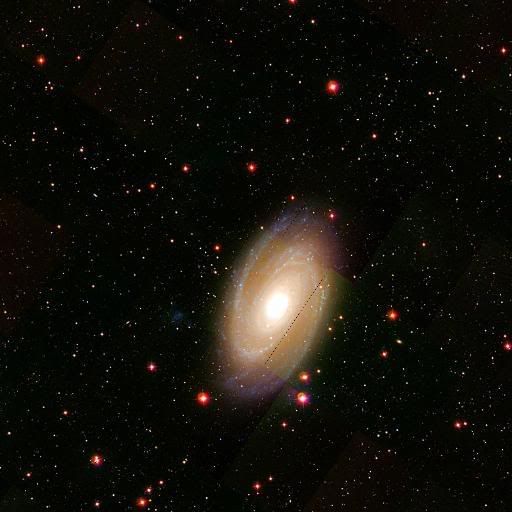
Elliptical galaxy
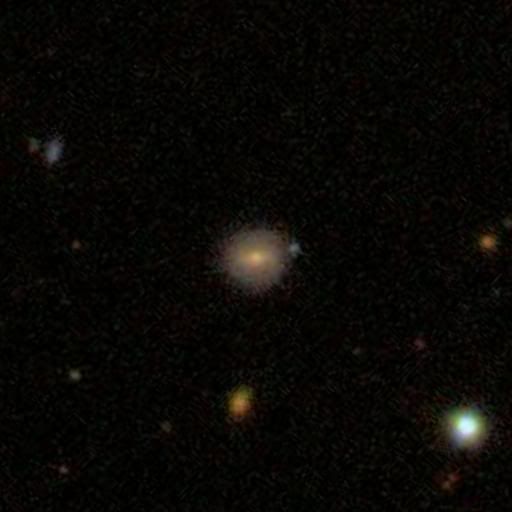
Edge-on spiral galaxy
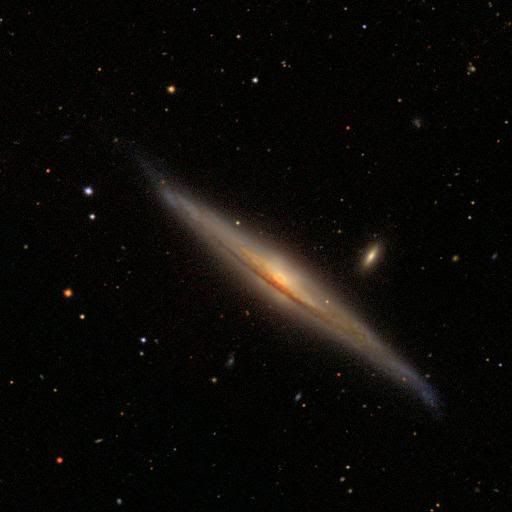
If you find anything particularly spectacular, you can submit it to the Galaxy Zoo Blog. Here are some wonderful ones:
Lots in one picture!

A space penguin (found by my sister):

Merging galaxies:

Nice little ring galaxy:

Nebulous and irregular ... hmm, how to classify that one?
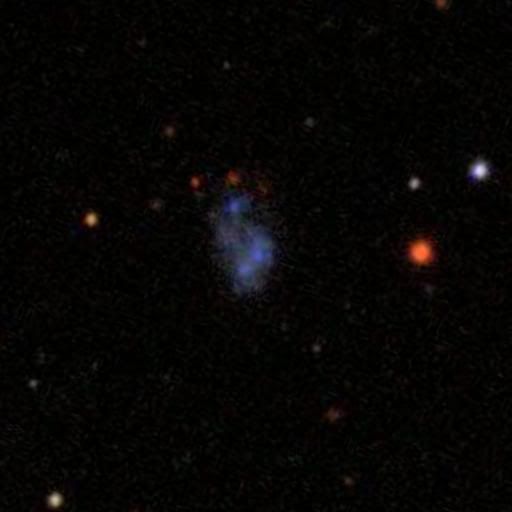
Whoopsy, that's not a galaxy!

So, if you want to see some more, you know where to go. http://galaxyzoo.org!
(I also have a Photobucket album of a few of my favourites.)
Welcome to GalaxyZoo , the project which harnesses the power of the internet - and your brain - to classify a million galaxies. By taking part, you'll not only be contributing to scientific research, but you'll view parts of the Universe that literally no-one has ever seen before and get a sense of the glorious diversity of galaxies that pepper the sky.
Why do we need you?
The simple answer is that the human brain is much better at recognising patterns than a computer can ever be. Any computer program we write to sort our galaxies into categories would do a reasonable job, but it would also inevitably throw out the unusual, the weird and the wonderful. To rescue these interesting systems which have a story to tell, we need you.
Here are some good examples (hey, this is the Astronomy Picture Thread, after all). All pictures courtesy of Galaxy Zoo; many found by yours truly!

Clockwise spiral galaxy

Counterclockwise spiral galaxy

Elliptical galaxy

Edge-on spiral galaxy

Spoiler Galaxy Zoo website on why they are doing this :
The Science
What do we want to know?
Galaxies, made up of billions of stars like our Sun, are the beacons that light up the structure of even the most distant regions in space. Not all galaxies are alike, however. They come in very different shapes and have very different properties; they may be large or small, old or young, red or blue, regular or confused, luminous or faint, dusty or gas-poor, rotating or static, round or disky, and they live either in splendid isolation or in clusters. In other words, the universe contains a very colourful and diverse zoo of galaxies. For almost a century, astronomers have been discussing how galaxies should be classified and how they relate to each other in an attempt to attack the big question of how galaxies form.
Edwin Hubble early last century divided the galactic zoo into two major categories. There are galaxies shaped like rugby balls (or American footballs) which we call 'ellipticals' and whirlpool-like galaxies which we call 'spirals'. More than 80 years later, there is still major controversy among scientists about how these two principal types are even connected in the global understanding of galaxy formation and evolution. Does one type evolve into the other? In theoretical simulations astronomers have found that the merger of spirals can create an elliptical, and that an elliptical can become a spiral by accretion of further stars and gas during its lifetime. Pictures of real galaxies in the sky taken with the most modern telescopes on earth and space reveal that such processes are indeed happening in nature. But how frequent are mergers? Are they really important? Does every galaxy go through such fundamental transformations during its lifetime?
What do we need to do?
Why don't we just look at galaxies and see how they evolve? Galaxies evolve over billions of years, which is why like evolutionary biologists, we can't just sit there and watch galaxies change. Instead, we need to look at the fossil record contained in the galaxies around us which provides only *one* snapshot of the universe.
The way scientists get around this problem is by analysing pictures of galaxies with up-to-date technology in as much detail as possible. Astronomers have spent many decades trying to measure basic galaxy properties such as age, mass or dustiness that may give us some clues as to how they formed and evolved and what precisely the connection between spiral and elliptical galaxies is. However, most studies of galaxies so far have only looked at a few dozen or hundred galaxies in the nearby universe and many aspects of galaxy formation and evolution are still a mystery.
However, with the advent of the 21st century the age of large-scale astronomical surveys has arrived! The Sloan Digital Sky Survey (SDSS) is taking images of a large portion of the sky and will eventually find a million galaxies. With such a large number of galaxies, astronomers can finally begin to understand how they form and evolve by comparing various populations to each other with large enough numbers to draw real conclusions about their origin.
But out of these million galaxies, how do we know which are spirals and which are ellipticals? The answer is simple: look at them! Indeed, until now galaxies have been classified by visual inspection of their images. And in fact, technology is of little help here. It turns out that the human brain is far better than a computer at recognising the patterns that divide ellipticals from spirals. So visual inspection works well for a handful, or even several hundred objects....but one million? There are just too many galaxies for even the most dedicated of astronomers to look at. We need thousands of people to inspect galaxy images and to classify them as spiral or elliptical. We need you to help us.
What can galaxies tell us about the wider Universe?
It is not only those of us studying galaxy formation who are curious about the shapes of galaxies. Cosmologists who study the origin and properties of the Universe itself can also learn from observations of galaxies and, in particular, their rotation. Generally galaxies rotate, and the details of their rotation (angle, speed, direction) depends on the way that they formed and on the properties of the space around them - such as the presence of magnetic fields, or the tidal pull from other structures.
Galaxies form from the gravitational collapse of much larger clouds of gas and, if the cloud has any rotation to start with, it will rotate faster as it gets smaller. This is similar to the way an ice-skater spins faster as they pull their arms in, and it is due to the conservation of angular momentum. In fact, it is this rotation that stops the galaxies collapsing any further as the gravity provides just enough force to keep the gas in its rotational orbit. Thanks to the spiral arms, it is straightforward to observe the rotation direction of spiral galaxies (clockwise or anti-clockwise) just by looking at them. We think that neighbouring galaxies will have formed from the same original large gas cloud. Therefore we expect close galaxies to share some properties, including the angle at which they rotate. By looking at these shared properties over different distances we can tell a lot about the process through which they formed.
But what about the wider Universe? Observing the rotation of galaxies also provides a probe of the large-scale properties of the Universe, and intriguingly there is already some indication from SDSS galaxies that all may not be as it seems! Our current theories about the Universe have it that galaxies should not prefer to rotate one way or the other, and we should therefore observe as many clockwise rotating spiral galaxies as anti-clockwise. This is related to a fundamental assumption we make in cosmology; that there are no special places or special directions in the Universe. Prof. Micheal Long from the University of Michigan has claimed, in his recent astro-ph preprint, that there is a preferred handedness (rotation direction) of galaxies in the local Universe. This is a revolutionary claim, that could force us to rethink our understanding about the underlying nature of space and employ a much more complicated background model for the Universe. The current claim is based on a sample of just 1660 galaxies from the SDSS survey, but a much larger sample is required to assess the significance of the effect which is where Galaxy Zoo comes in.
If you find anything particularly spectacular, you can submit it to the Galaxy Zoo Blog. Here are some wonderful ones:
Lots in one picture!

A space penguin (found by my sister):

Merging galaxies:

Nice little ring galaxy:

Nebulous and irregular ... hmm, how to classify that one?

Whoopsy, that's not a galaxy!

So, if you want to see some more, you know where to go. http://galaxyzoo.org!
(I also have a Photobucket album of a few of my favourites.)
Bluemofia
F=ma

The ring galaxy is probably an example of gravitational lensing. It looks just like Einstein's ring, except smaller.
A Revolutionary
Beating the Drums
deo
Emperor
Oh yeah, I have those pics for a long time now, I should have posted them here.
Funny that Betelguese has only 14 times the mass of our Sun, and Antares only our 15.5.

A computer-generated image of Betelgeuse viewed from a distance of about 8 AU.

By comparison, this is our own Sun viewed from the same distance.
Both of those Images are generated by Celestia.
Funny that Betelguese has only 14 times the mass of our Sun, and Antares only our 15.5.

A computer-generated image of Betelgeuse viewed from a distance of about 8 AU.

By comparison, this is our own Sun viewed from the same distance.
Both of those Images are generated by Celestia.
Dann
Green bug
West 36
Can count up to 4
Woo. Eurasia pwns Mars!
An that big sun thing, where big doesn't really cut it, how is that possible! And how big is that really? CRAP! I mean C-R-A-P CRAP! Thats... no words can describe! Can that thing have planets without swallowing them! CRAP! Imagine if our sun were that big... how far away from it would we have to be? CRAP!!
Bluemofia
F=ma
If you are supprised at Sun vs Antares, see Sun vs VV Cephei.
Warning, huge huge image.
You Tube for dramatic effect
Warning, huge huge image.
You Tube for dramatic effect
deo
Emperor
uat2d
ಠ_ಠ
i've just found this thread and i love it! 
please don't let it die!
These images are HUGE and beauty (and all "terraformed")
(Only) Open the spoilers if you want to save them to your computer, they're really BIG
Terraforming Mars:

Smaller version here!
Mars totally terraformed:

Smaller version here!
The Moon terraformed:

Smaller version here!
Venus terraformed:

Smaller version here!
Thanks Wiki for the images and for having this article
EDIT: I know this thread is about astronomy and not about Sci-Fi nor Space Colonization, but they're so beauty... !

please don't let it die!

These images are HUGE and beauty (and all "terraformed")
(Only) Open the spoilers if you want to save them to your computer, they're really BIG
Terraforming Mars:
Spoiler :

Smaller version here!
Mars totally terraformed:
Spoiler :

Smaller version here!
The Moon terraformed:
Spoiler :

Smaller version here!
Venus terraformed:
Spoiler :

Smaller version here!
Thanks Wiki for the images and for having this article
EDIT: I know this thread is about astronomy and not about Sci-Fi nor Space Colonization, but they're so beauty... !

steviejay
Now in Black and White!!
Those pics are HUGE (heh yeah I know yous aid they were but I'm just confirming the point  )
)
They're also really cool
 )
)They're also really cool

Perfection
The Great Head.
Similar threads
- Replies
- 836
- Views
- 45K
- Replies
- 63
- Views
- 2K
- Replies
- 34
- Views
- 2K


